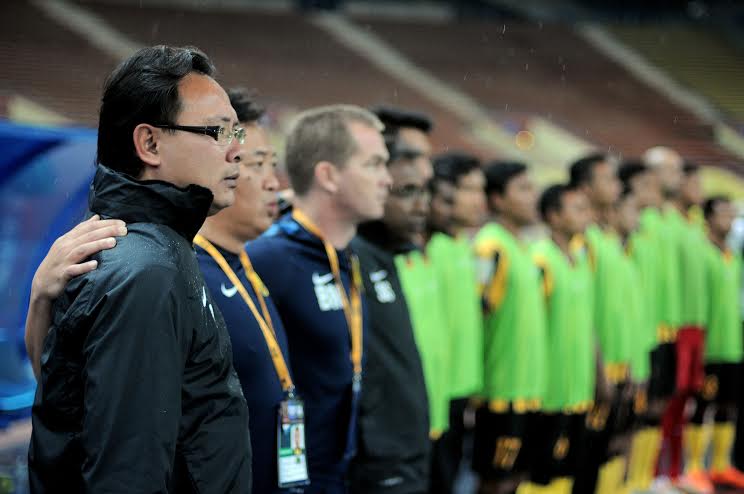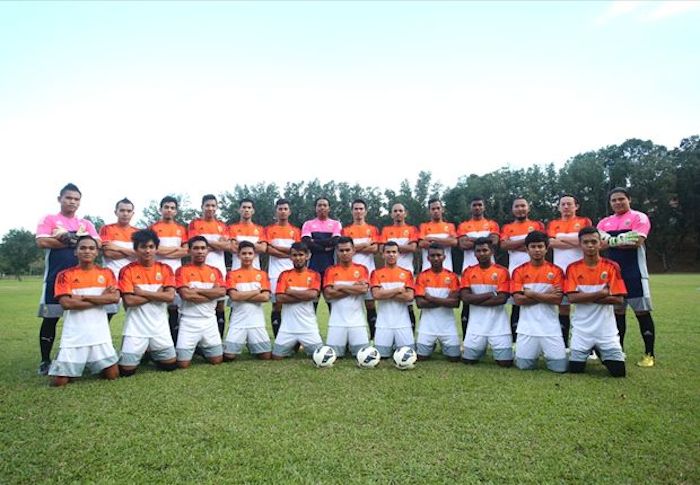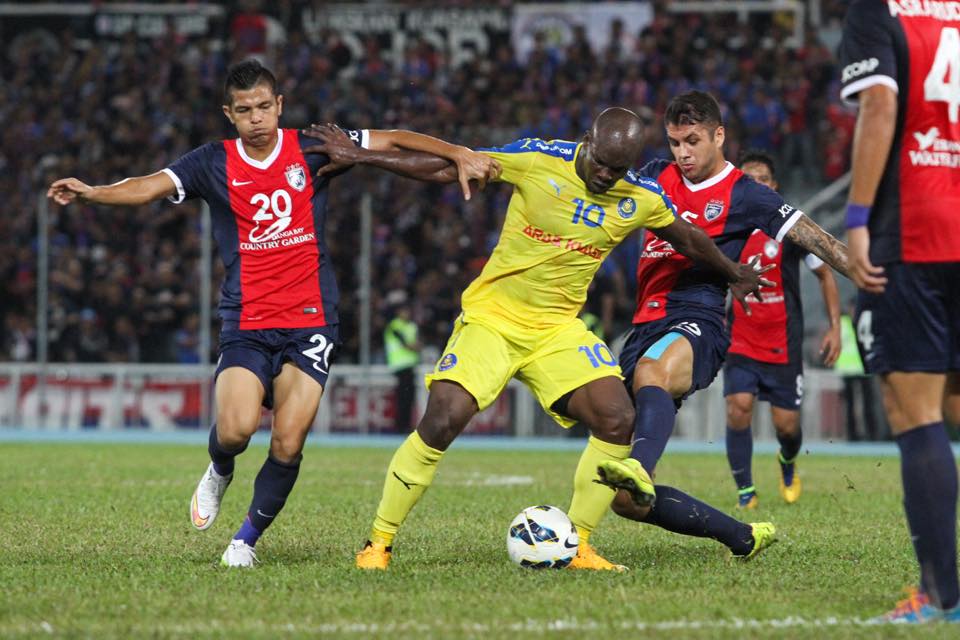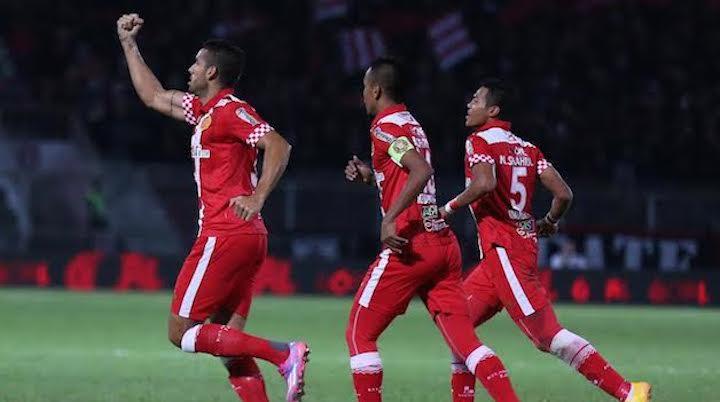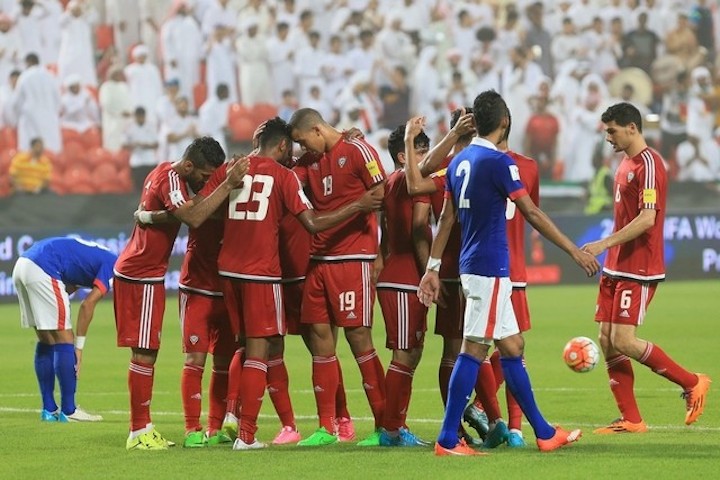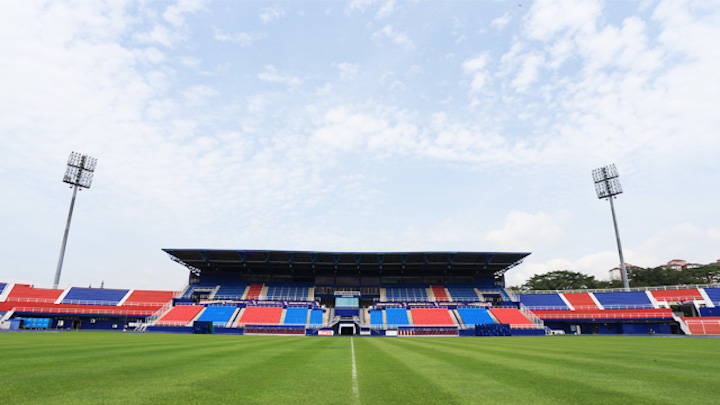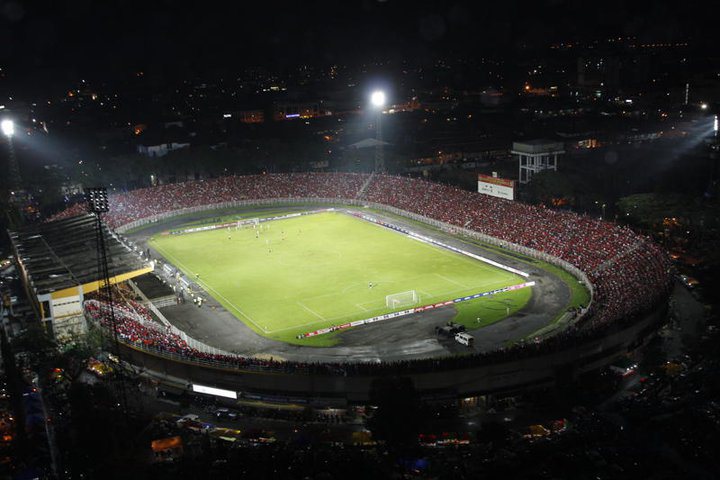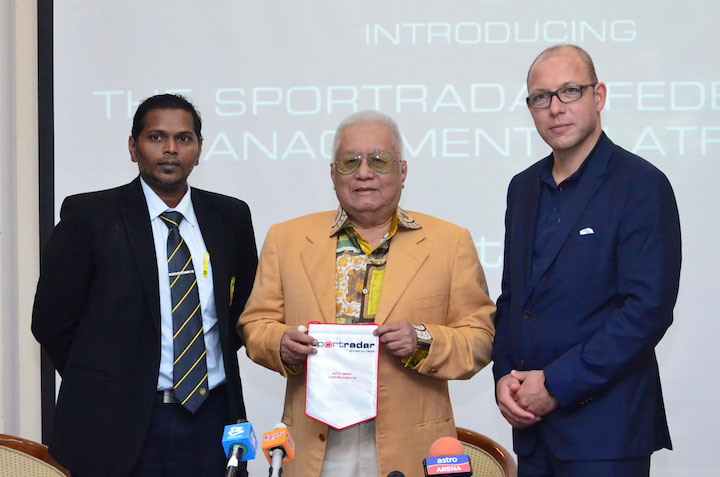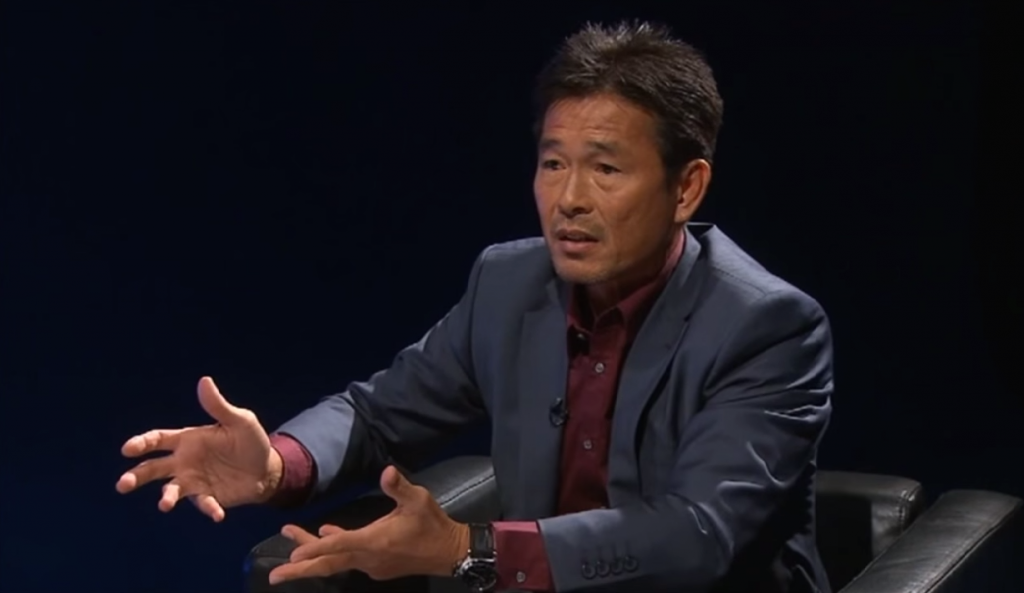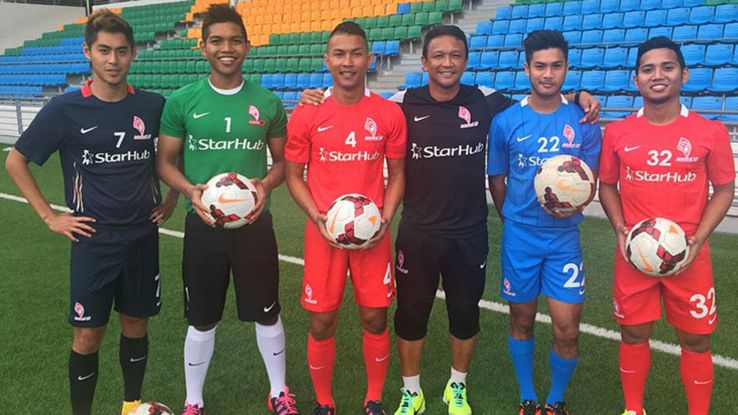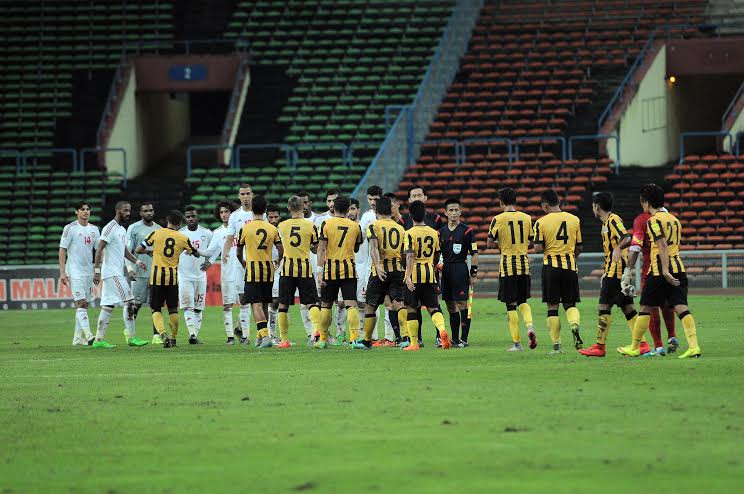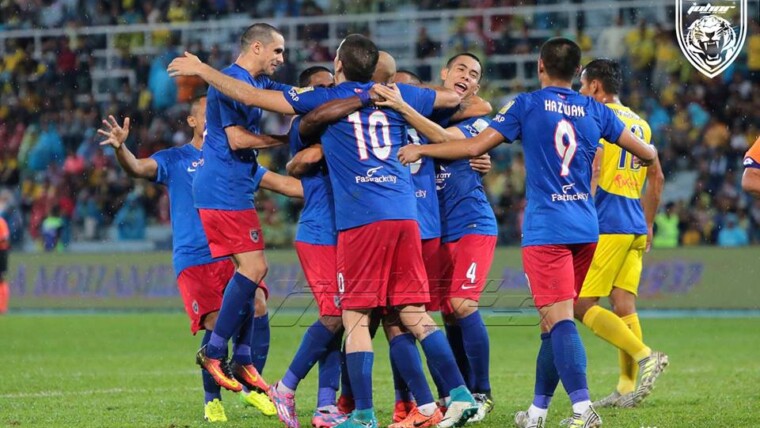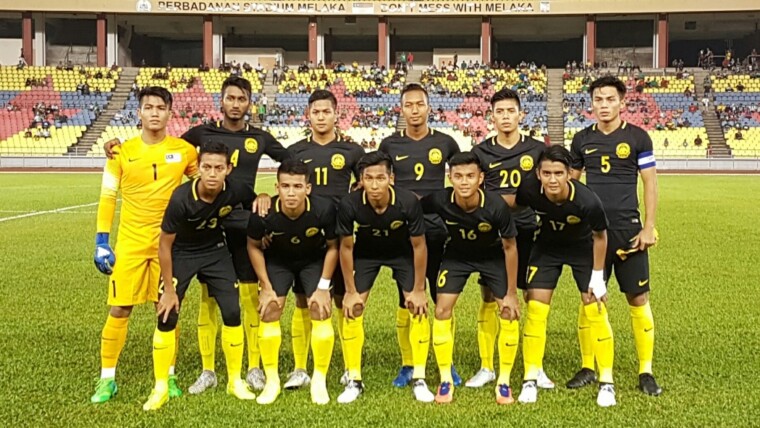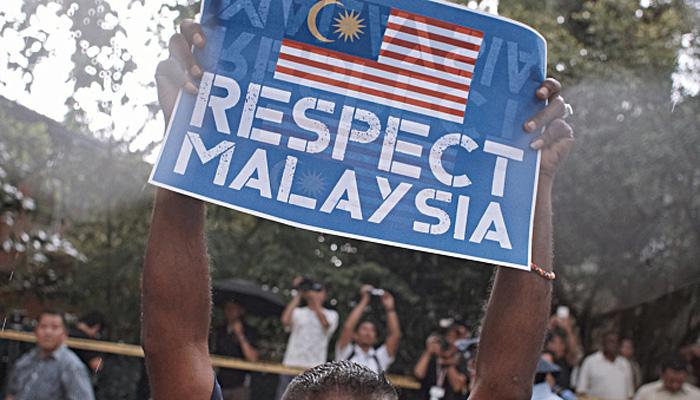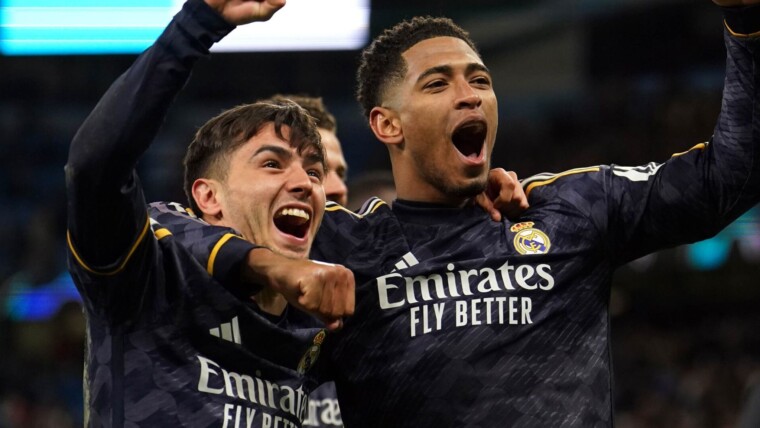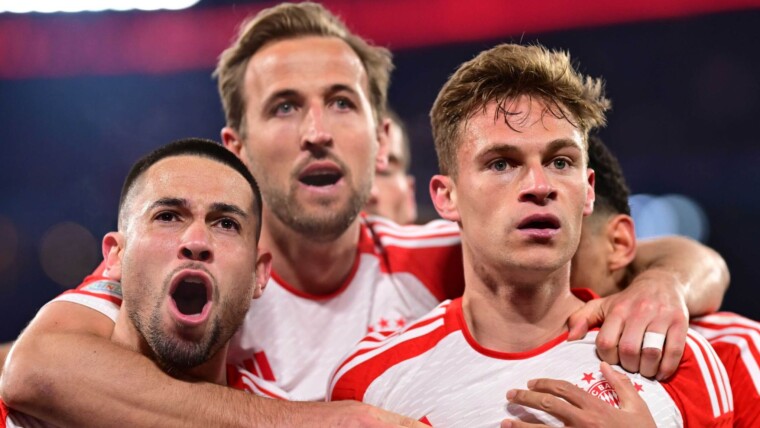A morale-restoring – though losing – performance – against the United Arab Emirates followed a humiliating 6-0 loss against Palestine to bring the curtain down on a depressing International year for Malaysian football. So, what lies in store for 2016?
Even as the destination of the 2015 TM Malaysia Cup is up for grabs, plans are in hand for the 2016 Malaysian Domestic season, slated to get underway on January 15th. No schedules released as yet, but with the Malaysia Cup Final delayed until December 12th, February is when teams are expecting the new season to kick off.
And the consternation surrounding non-payment to players of, amongst others, Kelantan and ATM, the disbandment of the one-season old Real Mulia from the FAM League, and confusion surrounding who is in charge at Selangor even as they battle for the Malaysia Cup, lead to even more negative headlines surrounding the domestic game.
So, a confusing and inauspicious way to prepare for kicking off a season that could – truly – be “the year” to kick-start the long-term restoration and reputation of the club/State football at a domestic level. Truly.
Some thought that kick-start to restoration happened five seasons ago when a broadcaster (Astro Arena) took a positive interest in domestic football, only for coverage to wither when that contract expired without renewal at the end of 2014. Look hard enough, and there are positive signs that resurgence, version 2, is on the horizon. Maybe not instantly on the International level, but on a domestic level, there are genuine reasons for optimism.
For evidence, look at the “good news” column:
League Champions Johor Darul Takzim’s morale-boosting victory in Dushanbe, Tajikistan to win the AFC Cup Final has raised the bar in terms of on-field possibilities. Whilst acknowledging that the AFC field was considerably weakened by the absence, courtesy a FIFA ban, of the Kuwaiti teams from the semi final, the victory against the odds in Dushanbe will instill a belief that Malaysian players can win at a level outside ASEAN.
And whilst JDT have proven themselves to be winners both on the AFC and domestic stages, it’s encouraging that – despite JDT’s advantage in terms of budget – the Malaysia Super League remained competitive. Pahang’s title challenge only evaporated on the last day of the season, and the likes of Selangor, Pahang and Terengganu (belatedly) showed they have what it takes to challenge JDT.
There’s also the example that JDT have set in terms of ambition, and off-field investment. The state-of-the art training facility currently close to completion, allied to the efforts to introduce youth feeder leagues and feeder teams in the State are all efforts clearly heading towards improvement of football in Johor.
The financial investment has been high – and probably beyond everyone else – but as Keeshaanan Sundaresan wrote in an earlier Fourth Official article, the efforts to implement a shift in culture and to get right imperatives such as marketing, sponsorship, crowd involvement initiatives, training and playing facilities, media activity and youth engagement are all examples other teams and states can and, using Terengganu FA’s social media team as an example, are following.
The Entertainment quotient of the League is high. In the Malaysia Cup, the goals-per-game average in the group stage to date is 3.06. That’s after a Super League season that averaged 3.11 goals per game.
Sadly, because reliable statistics are not officially recorded, then we can’t tell you how many shots per game there were, or goalkeeper save percentages to offer additional comparisons, but as an indicator of “entertainment”, the Goals Per Game stat compares favourably with the current or just completed league seasons in China (2.8 goals per game), Japan (2.68), Korea (a miserly 2.42), Singapore (2.69) and the much vaunted Thai League (2.79).
Others – far better informed and educated in football – argue that a lack of quality and poor fitness levels on display are two of the reasons as to why there are so many goals and goalmouth incidents in Malaysian domestic football, and that such issues spill over onto the International game. But this correspondent has long been an advocate of the entertainment on offer at, and all-round attractiveness of going to, many matches in our top League.
The biggest benefit of all in Malaysia is that there remains an undeniable passion for football allied to a regional pride when your team does well. Just witness the near 40,000 from Melaka who cheered their team to Promotion to the Premier League from the third level.
Crowds in the Super league and Malaysia Cup have been healthy – Sime Darby, PDRM and ATM excepted – despite the absence of concentrated television and media coverage for the season. The additions of Penang and Kedah to the top flight will only add to those crowds and interest, while the loss to Premier league of fan less Sime Darby gives us another example – if we needed it – that clubs without a fan-base are fleetingly successful, and rarely mourned.
In the TM Malaysia Cup, we have seen some excellent and invigorating football. Kedah’s 5-0 whopping of Terengganu was arguably THE performance of 2015 with the achievement of The Canaries and fellow Premier League side PKNS in reaching the knockout stages of the competition – as well as Penang taking four points off defending Champions Pahang in the group stages – telling us that there is some depth of competition in Malaysian football. JDT may be winning all the attention, but there is rarely an easy game in the League or Malaysia Cup.
Trying to gloss over events against Palestine, even the National team has started a process of healing post Abu Dhabi. That 10-0 mauling against the UAE was the result of many issues both on and off the pitch. Ex-Coach Dollah Salleh may well go down as Malaysia’s version of England’s Kevin Keegan – exhilarating and successful at club level, but found out at International level when not able to select the players he thought were the best for the Nation post Suzuki Cup.
The more organized Ong Kim Swee has implemented a disciplined approach, and whilst progress received a huge blow against Palestine, the performances against Saudi Arabia and Palestine – even in defeat – offer some hope that the more disciplined approach can produce improving performances and results.
But even the negativity that surrounded the “10-0” can be turned into a positive. There was such a howl of displeasure over the result that even wearied critics – beaten into apathy after years of frustration – looked for ways to move forward.
Off the field, money to be banked from the huge Broadcast deal – assuming it is managed fairly and properly – promises an opportunity for every team in the League a cash guarantee from which to grow their business, and to ensure that the problem of players not being paid should be a thing of the past. And assuming broadcast agreements can be sorted out ahead of the season, the League – hopefully – will be boosted by a return to “Astro Arena” style positive and wall-to-wall coverage.
Playing facilities in Malaysia are often criticized. Again, this correspondent reckons this to be exaggerated. Whilst the dearth of football specific stadia stifles a really good match-day atmosphere, a look around the facilities suggest that, whilst more care and attention wouldn’t go amiss, they are better than most in the region.
In the “good to excellent” category come Selangor’s Shah Alam which is a modern, imposing venue with a decent playing surface; Johor’s “Larkin Stadium” has been reinvented in the last four years with the playing surface akin to walking on a carpet; The re-introduced Sultan Mizan Zainal Abidin Stadium in Terengganu is a gorgeous, though roofless, structure with good turf.
The new venue in Penang is similar – though the hope is that The Panthers will continue to utilise their cozier “City Stadium” which is such an atmospheric venue when full. Singapore’s Jalan Besar & SportsHub venues are both, in their own way, magnificent sporting amphitheatres. And then there is the investment FELDA has made in the made-for-football venue a potential tipping point for Malaysian venues in the brave new promised world of privatization.
Several stadia need some tender loving care, but are still imposing. Pahang’s Darul Makmur Stadium had a relatively recent makeover which, allied to Perak’s Ipoh venue, PDRM’s proposed home in Negeri Sembilan, plus the venerable Sarawak and Darul Aman Stadia in Alor Setar – whilst all in need of some ‘TLC’ and a coat of paint – would all be the envy of clubs around the world.
Even the monsoon affected Kelantan Stadium has charm and a passionate atmosphere with the scoreboard, like that in Johor, a really top class addition to the venue. So, every team in the top division next year has – with a coat of paint and a scrubbing down – a home that is worthy of regional comparison. Not many, though, possess adequate training facilities. That, surely, is the next step.
The clear intent from the emergence of FMLLP (Football Malaysia Limited Liability Partnership) to guide Clubs to become run professionally – and not dependent upon a single stream of income – is a major and proper step. True, this has been promised before, but this time a body is in place to manage, implement and help the change. One hopes they will be empowered to implement changes.
FMLLP are up and running and already talking sense. Suggestions such as a revised transfer window to coincide with the rest of the world, plus a re-vamp of the Malaysia Cup to enable the co-existence of league and Malaysia Cup through to the end of the season, are both mooted.
The implementation of Opta stats says that the League is taking its players and results seriously. At last! It is incredible that there are no (easily available) historical or current statistics for such a high-profile League. If you wanted to find a proper biography of, for example, Norshahrul Idlan Talaha, your BEST source of information is Wikipedia. Bizarre – but true.
Similarly, the association with Sportradar may counter some of the “kelong” talk that invariably follows any upset result. League Champions Chelsea lose seven of their first 12 games, and it’s a footballing problem. Here, “Match-fixing” is a subject that even the Sports Minister feels need to comment upon. Sports Radar will help address that negativity.
So, much is in place for 2016 that looks and sounds good. Competitive league; crowd-pulling clubs promoted; a league that can produce an AFC Cup champion; cash coming into the sport; and some attention paid to the small but hugely important issue of statistics being recorded.
Surely we can expect significant progress. But…
Whilst JDT have shown the way with significant investment in salaries & bonuses, upgraded facilities, off-field innovations, and – we understand – a new stadium planned, they are the exception rather than the rule. Few others will be prepared – or able – to match that scale of investment. Without a change of mind-set from club financiers, it may indeed be impossible to compete with JDT, in which case there is the danger of this becoming a one-team League. And that benefits no body except Johor.
And if clubs – other that FELDA – don’t own their stadia, what other ways are there for them to generate significant match-day income. And are clubs prepared to go through the hard graft required to become properly independent, rather than sporting organisations that rely on the grace and favour of patronage – political or royal.
The National team is already a subject of debate, and there’s a concern about a dearth of quality younger players coming through the system. Focusing on the performance at the SEA Games and the AFC under-23 Qualification Tournament rather darkened the mood surrounding under-age football. The very fact that Lim Teong Kim’s under-13’s received nationwide coverage for winning some (good) youth tournaments abroad is a testament to the lack of good news stories from the older age groups. It is incredible – in a bad way – for under 13’s to get such attention.
Generally, the written press – so vital to the good image and health of the sport – are looking for football stories, but don’t see enough good reason to properly get behind the senior leagues and National team. Too many “players not being paid”, “Coaches being ‘rested’ rather than sacked”, and too many false dawns have wearied the wizened Press Corps. Too many “you must be kidding” moments.
When it comes to day-to-day coverage and debate about playing styles there is precious little coverage. As an example, “Gegenpressing” was widely quoted when Jürgen Klopp moved to Anfield, and yet how many times have we seen anything written about the styles or formations employed by Malaysian teams?
The broadcast coverage of Live matches this season was haphazard, and coverage of the league other than live matches was perfunctory at best. Even now, and despite the millions pledged, broadcast details for 2016 are unclear. Where can the fan get their live fix and highlights? I truly wish we could enlighten you.
One of the biggest frustrations of being an advocate of domestic football is that, for all the potential – and it is huge – there’s a near-constant uncertainty.
What Singapore representation – if any – will be allowed for 2016? There’s a meeting scheduled for late November, but isn’t that months too late? Fixtures ought to have been released already, and yet we don’t even have confirmation of the teams to play in the League, never mind dates and venues.
When does the League kick off? Will we have a repeat of the situation of the last two seasons where the blue riband of Malaysian sports events, the Malaysia Cup Final, has been shifted from date to date? This year, due to the infernal haze, International date clashes, and the “surprise” that JDT made it through to the latter stages of the AFC Cup, the Cup Final date has slid from a visualised mid-November through to December 12th.
Last season, its November 8th date was moved forward to Nov 1st less than a month before the game was supposed to have been played. For whatever reason the change took place – and the rationale was to enable the National team to have additional time together before the Suzuki Cup. If the date of the Malaysia Cup Final – which has been around since 1921 – isn’t important enough to protect, then what is?
Imagine if the final of the UEFA Champions League was altered? There would rightly be uproar. Here, the Premier event of the season changes, and the reaction is a shrug of the shoulders. That seems to be the perfect example of the need to restore certainty in planning and delivery of a clear and consistent message. If Malaysian football can’t protect for it’s own Premier competition, why should anybody else? Sponsors included.
A huge value has been given to Malaysia football. But if you were in charge of a big sponsorship fund, and you were approached to sponsor the League, and the person doing the “selling” was unable to tell you what teams were playing, when the competition would start, on what days matches would be played, and what media coverage was guaranteed? How would anyone react?
Johor have shown the way off the field with their organisation, and on the field with their trophies. Other keystones are in place. It’s now up to the others – mainly administrators and team financiers/managers to follow the lead.
Still, there is much work to do – particularly in Kuala Lumpur – to re-establish the credibility of the domestic game. But if any time is ripe for this to happen, it is now. There truly won’t be many better opportunities.
Other posts by Dez Corkhill

